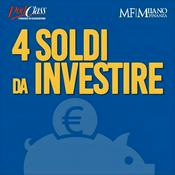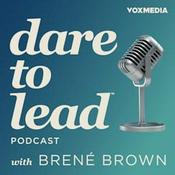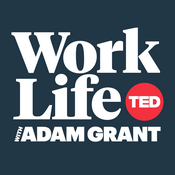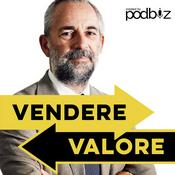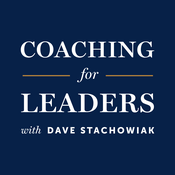176 episodi

Where to Invest in 2026 After This Year’s Market Volatility
19/12/2025 | 13 min
Market volatility has left its imprint in 2025. Turbulence from tariffs, tech, and more have shaken investors’ confidence at times. Many folks looked for safety during those down periods. Yet, the US stock market overall has delivered a strong performance. So, who are the leaders and laggards as this year comes closer to wrapping up? And what should you watch with 2026 fast-approaching? Morningstar Indexes strategist and columnist Dan Lefkovitz has examined this year’s investment performance.5 Investing Surprises From 2025On this episode:00:00:00 Welcome00:02:45 Market volatility ebbed and flowed in 2025. How volatile was the US stock market this year compared to recent years? 00:03:51 What has driven the volatility this year? 00:05:16 During these down periods, where did investors hide or seek safety? 00:06:04 Let’s zoom in on the investment leaders and laggards this year. What areas are outperforming, and which ones are underperforming? 00:06:43 You research the performance of investment factors which can drive risk and return. What has been the leading factor this year, and why?00:08:32 Leadership changed throughout the year. What caused those changes? 00:09:33 Q4 will end in a few weeks. What areas should investors watch as we head into 2026? 00:11:22 We’ve discussed market volatility in 2025. What takeaways can we bring with us into the new year? Watch more from Morningstar:Why Betting Against Nvidia in the AI Arms Race Could Be a MistakeHere’s What Your Retirement Spending Rate Should Be in 2026How ETFs Help You Cut Your Tax Bill Follow Morningstar on social:Facebook https://www.facebook.com/MorningstarInc/X https://x.com/MorningstarIncInstagram https://www.instagram.com/morningstarinc/?hl=enLinkedIn https://www.linkedin.com/company/morningstar/posts/?feedView=all Hosted by Simplecast, an AdsWizz company. See pcm.adswizz.com for information about our collection and use of personal data for advertising.

Why Betting Against Nvidia in the AI Arms Race Could Be a Mistake
12/12/2025 | 29 min
A shift in mindset can help investors cope with market uncertainty.2025 was a case study in the futility of trying to predict the market. Wall Street had lofty expectations for stocks entering the year. Then the tariff shock in April rattled the markets and many firms lowered their annual stock forecasts in response. They later raised them—after stock prices rebounded. With the new year on the horizon, Morningstar’s 2026 Global Outlook report is offering investors tactics to weather whatever the future may hold.Morningstar strategists and an analyst will discuss key challenges facing investors in 2026 in our series. Dan Kemp, the chief research and investment officer with Morningstar Investment Management Europe, is one of the major driving forces behind the report.We’re going to dig into research analyzing the AI arms race and its worldwide buildout. A team of Morningstar researchers have investigated the spending and the risks. Morningstar Research Services’ senior equity analyst Brian Colello was part of the effort. Brian also covers Nvidia. He discusses the AI king’s outlook, competition, and stock.AI Arms Race: How Tech’s Capital Surge Will Reshape the Investment Landscape in 2026On this episode:00:00:00 Welcome00:01:48 We typically talk about your Markets Brief column, but today we’re focusing on “Morningstar’s 2026 Global Investment Outlook.” The theme is “preparing for what comes next.” What will investors looking for ways to cope with uncertainty find in this in-depth report? 00:02:35 What makes Morningstar’s outlook different from other companies? 00:03:21You’ve written about how a few ideas from the global investment report resonated with you. What are they, and why? 00:05:01 As we wrap up our conversation, what’s a lesson from 2025 that you want investors to take into 2026?00:07:13 Big Tech companies are spending hundreds of billions of dollars on the global construction boom. Where’sthe money going, and how does this spending compare to other sectors like energy? 00:08:20 This massive buildout comes with execution and cost risks. What’s at stake if hyperscalers underestimate these challenges? 00:09:54 How is AI affecting sector valuations? How does it compare to the tech bubble in the late 1990s? 00:12:18 Morningstar believes many investors are already heavily exposed to AI due to Big Tech’s size in broad stock indexes. How can folks counteract that? 00:14:31Let’s pivot to the AI industry leader, Nvidia. The chipmaker’s stock took a big hit when DeepSeek arrived in January. Nvidia became the world’s first $5 trillion company in October. What are your thoughts about the year Nvidia is having? 00:17:20 Rival chipmaker Moore Threads recently made its market debut in China. What would it mean for Nvidia if China comes out with more advanced chips? 00:20:12 Interest is growing in Alphabet’s AI chips. Can Nvidia fend off competition from one of its customers?00:23:30 What is your outlook for Nvidia and other chipmaker stocks? And which do you think is undervalued? 00:26:18What’s the takeaway for investors regarding Nvidia and the AI arms race? Watch more from Morningstar:Here’s What Your Retirement Spending Rate Should Be in 2026How ETFs Help You Cut Your Tax BillTax-Loss Harvesting Isn’t Just for Downturns. Here’s Why Follow Morningstar on social:Facebook https://www.facebook.com/MorningstarInc/X https://x.com/MorningstarIncInstagram https://www.instagram.com/morningstarinc/?hl=enLinkedIn https://www.linkedin.com/company/morningstar/posts/?feedView=all Hosted by Simplecast, an AdsWizz company. See pcm.adswizz.com for information about our collection and use of personal data for advertising.

Here’s What Your Retirement Spending Rate Should Be in 2026
05/12/2025 | 22 min
Most retirees want to spend as much as they can without having to worry about running out of money. Morningstar’s State of Retirement Income research analyzes retirement spending strategies to determine the highest safe starting withdrawal rate for new retirees in 2026. Christine Benz, Morningstar’s director of personal finance and retirement planning and co-host of The Long View podcast, breaks down the research and shares some ideas about how you can boost your retirement spending.What’s a Safe Retirement Withdrawal Rate for 2026?On this episode:00:00:00 Welcome00:00:46 Each year, you and your colleagues producethis really comprehensive research about retirement income. And as part of that research, you try toidentify what a safe withdrawal rate will be for the year ahead. 00:01:59 What is that safe withdrawal percentage, and how did you arrive at that conclusion?00:02:41 The 4% rule often comes up in the conversation around retirement spending. How does that compare to your base case?00:03:30 I know there are some misperceptions about your retirement income research and what that safe withdrawal percentage means. What are they? 00:03:28 So, how should retirees use this research?00:04:51 The safe starting withdrawal rate that you found in your base case might feel a little low for some retirees. Are there other strategies that retirees can use to boost their spending?00:07:02 So, flexible strategies are best suited for retirees that are focused on maximizing their spending. 00:08:52 What kind of retiree would benefit from a more rigid strategy, like the fixed inflation-adjusted spending approach that you use in your base case?00:09:26 How does asset allocation come into play? Would a stock-heavy portfolio support a higher withdrawal rate in retirement?00:10:36 So far, we’ve focused on portfolio income strategies, but you also looked at nonportfolio income sources like annuities and Social Security. What did you find?00:13:34 It seems like there’s some more nuance to the suggestion of delaying Social Security. Can you talk about that? 00:14:50 How about annuities? Can you discuss some of the key considerations that income-centric retirees should bear in mind?00:16:07 Studies have found that retirees don’t actually spend the same amount over the course of their retirement. What does actual retirement spending tend to look like, and how might that affect a retiree’s plans?00:17:59Let’s talk about some scenarios that can throw off a retiree’s plan. One might be a market downturn early in retirement. What kind of impact could that have on spending? 00:18:56 Another scenario might be retiring earlier than expected. What kind of implications would that have for safe withdrawals?00:20:26 What is one final takeaway from the research that you want retirees to come away with? Watch more from Morningstar:How ETFs Help You Cut Your Tax BillTax-Loss Harvesting Isn’t Just for Downturns. Here’s WhyBond ETFs Are Surging in Popularity in 2025. Here Are 5 of the Best Follow Morningstar on social:Facebook https://www.facebook.com/MorningstarInc/X https://x.com/MorningstarIncInstagram https://www.instagram.com/morningstarinc/?hl=enLinkedIn https://www.linkedin.com/company/morningstar/posts/?feedView=all Hosted by Simplecast, an AdsWizz company. See pcm.adswizz.com for information about our collection and use of personal data for advertising.

How ETFs Help You Cut Your Tax Bill
28/11/2025 | 15 min
Exchange-traded funds can help you cut your tax bill. All funds must distribute capital gains from the stocks and bonds that they sell throughout the year. The gains can leave you stuck with unwanted taxes. ETFs and mutual funds differ when it comes to tax efficiency. It starts with how the investments are traded and how the transactions are treated. The differences can result in ETF investors owing less than mutual fund investors or nothing at all because ETFs can minimize their capital gain distributions. Bryan Armour, Morningstar’s director of ETF and passive strategies research for North America, explains how ETFs beat mutual funds at the tax game.ETFs vs. Mutual Funds: The Benefits That Really Matter On this episode:00:00:00 Welcome00:01:01 ETFs are more tax-friendly than their mutual fund rivals. Why is that?00:02:17 How does the way ETFs are traded limit the tax drag that affects mutual funds?00:03:23 ETF investors will eventually pay a tax bill. Why is it important to control when that happens?00:04:04We talked about tax drag. What about cash drag? How are ETFs winning here?00:04:51An ETF’s underlying strategy can sharpen or dull the edge it has over a mutual fund when it comes to capital gains. Which ETF strategies have held the biggest advantage over the past few years?00:05:40Can you talk about the tax issues involving international stocks when managing gains in an ETF?00:06:55And what about taxable-bond ETFs versus mutual funds?00:07:37 Some ETFs do not benefit from tax efficiency. Which investments are those, and why don’t they?00:08:24High-turnover strategies, where there’s a lot of buying and selling, can result in a big tax bill for investors. What have you found when you compared two momentum strategies?00:08:58How can outflows leave loyal investors with a big tax bill?00:09:49Active ETFs’ popularity is soaring. How tax-friendly are these investments versus their passive peers and mutual funds?00:10:52 Which ETFs belong in taxable accounts and tax-advantaged accounts like an IRA or 401(k) to maximize tax efficiency?00:11:55What if someone listening or watching just realized they should work on their asset location? What should they do?00:12:54What’s the takeaway for using ETFs to cut tax bills? Watch more from Morningstar:Tax-Loss Harvesting Isn’t Just for Downturns. Here’s Why Bond ETFs Are Surging in Popularity in 2025. Here Are 5 of the BestInvestors Still Need to Mind the Gap in Their Funds’ Returns Follow Morningstar on social:Facebook https://www.facebook.com/MorningstarInc/X https://x.com/MorningstarIncInstagram https://www.instagram.com/morningstarinc/?hl=enLinkedIn https://www.linkedin.com/company/morningstar/posts/?feedView=all Hosted by Simplecast, an AdsWizz company. See pcm.adswizz.com for information about our collection and use of personal data for advertising.

Tax-Loss Harvesting Isn’t Just for Downturns. Here’s Why
21/11/2025 | 15 min
Your portfolio might be due for an end-of-the-year cleanup. The Morningstar US Market Index is up about 15% through mid-November 2025, and overall performance has been strong for years (even after 2022’s down market). That said, some stock sectors have performed significantly better than others, and performance can vary widely even within a sector. That could mean you’relikely holding some winners and some losers. Tax-loss harvesting could help trim your tax bill to save some money. While you’re tuning up your portfolio, it could also be a good opportunity to bring your asset allocation back into balance. Morningstar portfolio strategist Amy Arnott is here to explain how to pull off both strategies.How to Rebalance Your Portfolio in a Lofty Market https://www.morningstar.com/portfolios/how-rebalance-your-portfolio-lofty-marketOn this episode:00:11 Welcome01:03 What is tax-loss harvesting, and how does it work?01:41 Is a brokerage or retirement account better suited for tax-loss selling? Why?02:12 The US stock market has experienced solid growth so far in 2025. Do up markets make it harder to spot losses?02:52 Why is tax-loss harvesting still a good strategy even when times are good?03:32 Where can investors find losses to offset gains in their portfolio this year? Let’s start with stocks.04:33 And what about mutual funds and ETFs?05:17 Can you explain what wash-sale rules are, and how to play by the IRS’ rules?06:39 What are some other strategic ways to take advantage of the losses?07:55 In the spirit of tuning up our portfolio, this might be a good time to rebalance. How does that work, and why can it be an emotional challenge sometimes?09:14 The 60/40 portfolio might need rebalancing. What’s happened over the past decade?09:43 And what about growth versus value and US versus international stocks?10:44 What are a few tips on how to restore balance to a portfolio? 12: 48 What is the takeaway for taking this time of year to do tax-loss harvesting and rebalancing? Watch more from Morningstar:Bond ETFs Are Surging in Popularity in 2025. Here Are 5 of the BestInvestors Still Need to Mind the Gap in Their Funds’ ReturnsThe US Dollar Is Weak. Is Your Portfolio at Risk? Follow Morningstar on social:Facebook https://www.facebook.com/MorningstarInc/X https://x.com/MorningstarIncInstagram https://www.instagram.com/morningstarinc/?hl=enLinkedIn https://www.linkedin.com/company/morningstar/posts/?feedView=all Hosted by Simplecast, an AdsWizz company. See pcm.adswizz.com for information about our collection and use of personal data for advertising.
Altri podcast di Economia
Podcast di tendenza in Economia
Su Investing Insights
Ascolta Investing Insights, Black Box - La scatola nera della finanza e molti altri podcast da tutto il mondo con l’applicazione di radio.it
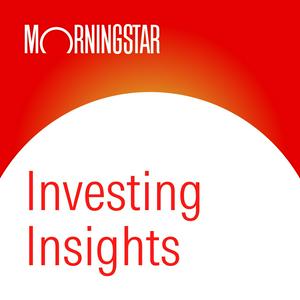
Scarica l'app gratuita radio.it
- Salva le radio e i podcast favoriti
- Streaming via Wi-Fi o Bluetooth
- Supporta Carplay & Android Auto
- Molte altre funzioni dell'app
Scarica l'app gratuita radio.it
- Salva le radio e i podcast favoriti
- Streaming via Wi-Fi o Bluetooth
- Supporta Carplay & Android Auto
- Molte altre funzioni dell'app


Investing Insights
scarica l'app,
ascolta.









